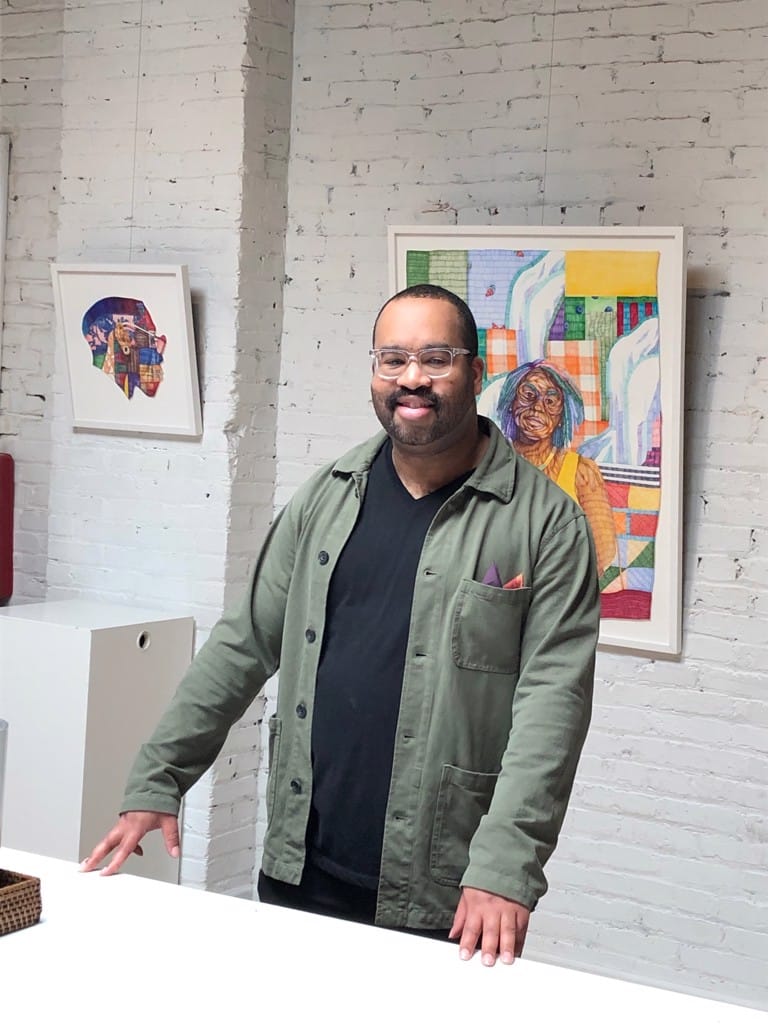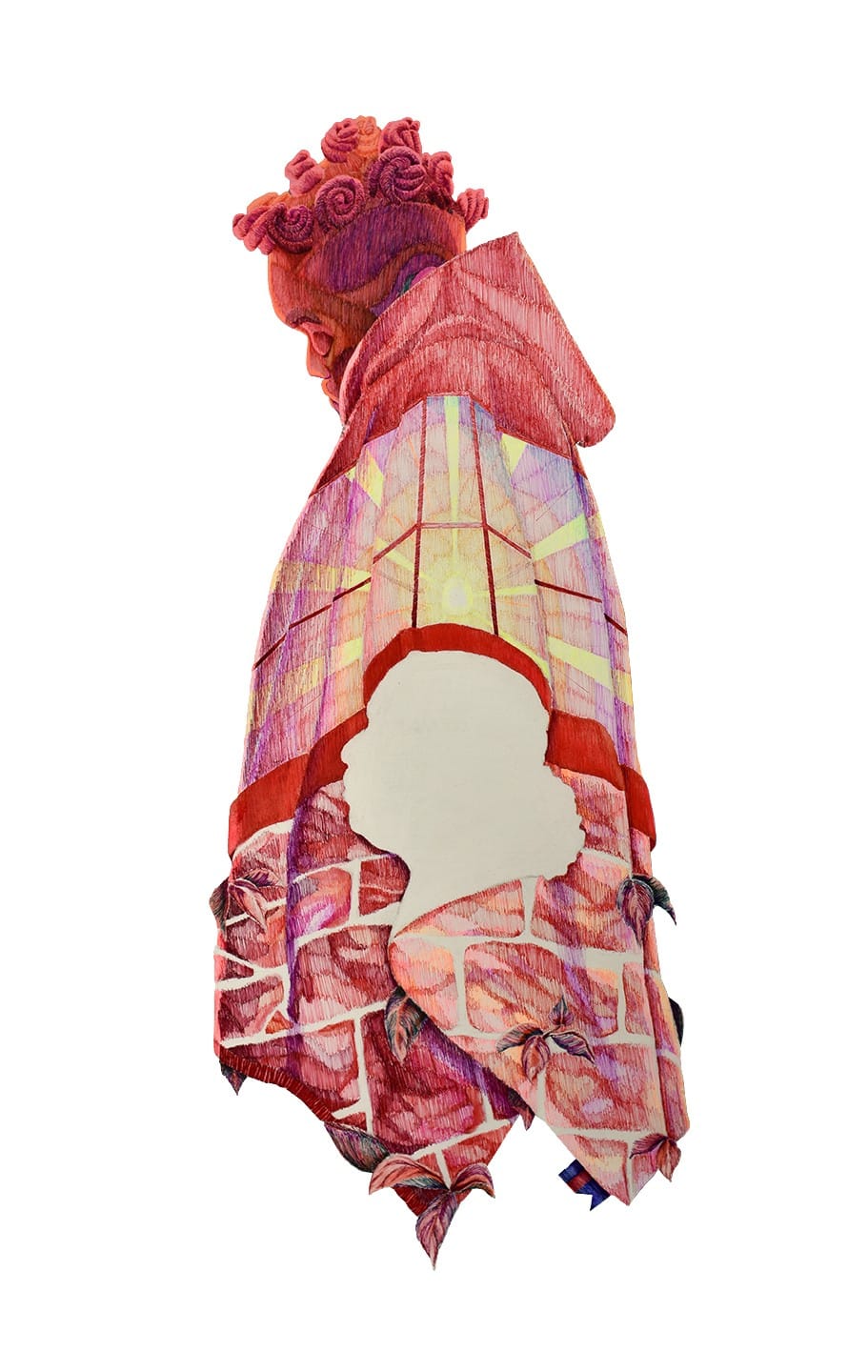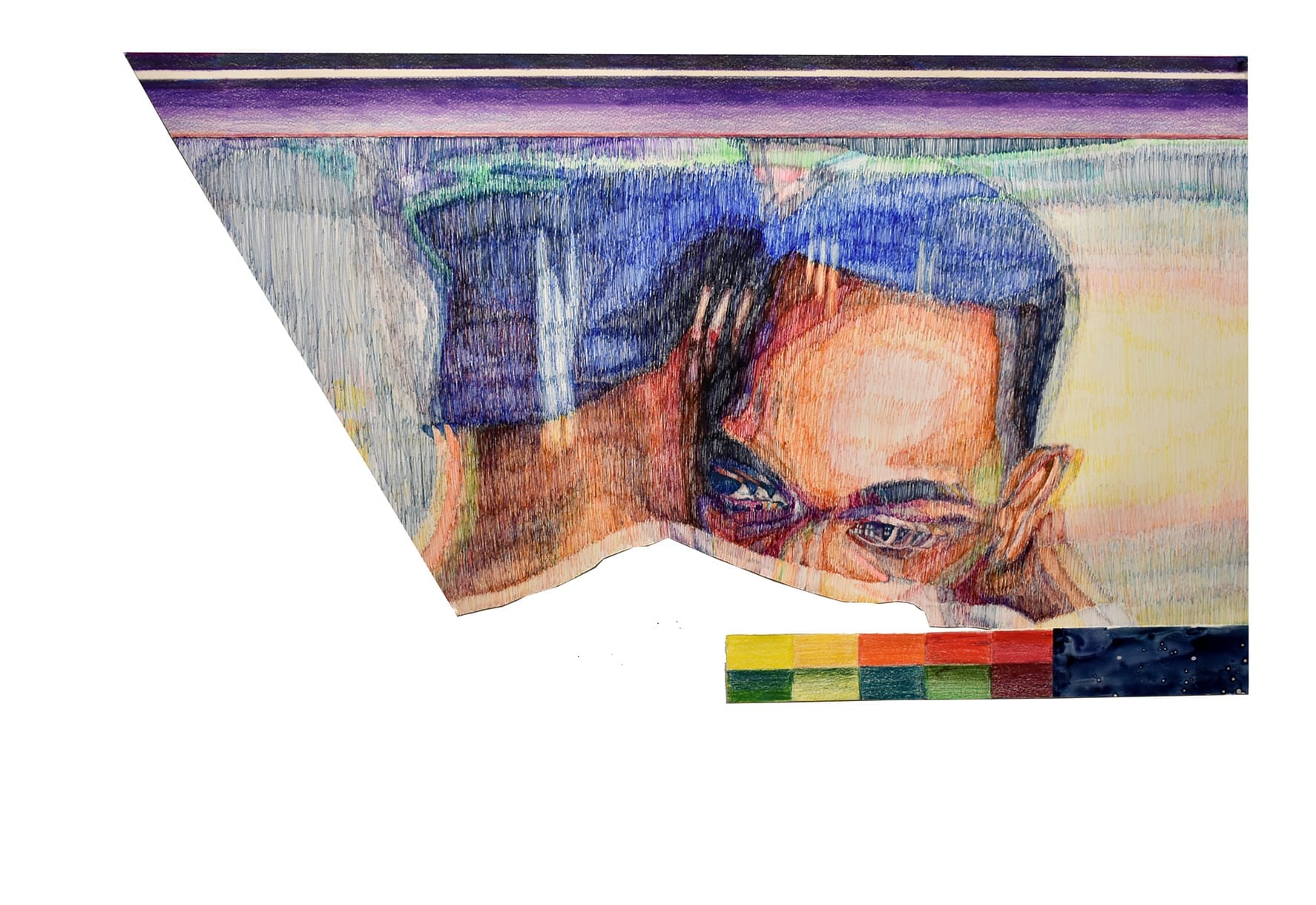Maryland-based artist Michael A. Booker is making literal waves in the art world using wavy lines and symbolic imagery. His exhibits, including Wave Patterns at Idea Lab, University of Texas, and Veil at Morton Fine Art in Washington D.C., explore themes of Black history, cultural expression and emotional resilience. Booker uses wavy lines to create intricate drawings rich in symbolism and detail. His pieces use colourful fine-line pen drawings to create mesmerizing wavy patterns that evoke the undulating strands of Black hair.
These are a powerful commentary on the experiences of African Americans, as their hair has often been a site of contestation. Attempts at discrimination against the Black community are frequently made by forcefully eliminating or making derogatory remarks about Black hairstyles. This is why putting them front and centre empowers their ongoing struggle for equality, aligned with the United Nations Sustainable Development Goal of Reduced Inequalities.

Booker’s exhibition Wave Patterns, delves into the complexities of human communication. One of the pieces from the exhibition, bEAcon, portrays a Black person whose facial expressions have been concealed by turning away from the viewer. Booker has focused the viewers’ gaze on their Black hairstyle and clothes, inviting viewers to explore a universal theme of identity and expression instead of concentrating on a person’s face and individual identity.
As bEAcon portrays the silhouette of an older woman on the person’s coat, the piece can be interpreted as a child’s longing for their female parental figure. This is an emotion which people from all backgrounds can relate to, allowing them to empathize with the plights of the depicted Black person. Overall, this piece shows that even if a person does not speak another person's language or share similar backgrounds with them, there are still universal values, symbols and codes that another person can pick up on to empathize and relate to one another.

In his other exhibition, Veil, Booker explores Black emotional resilience and self-protection in the face of adversity. Here, he creates more large-scale portraits depicting partially obscured bodies, accompanied by swathes of colour and organic forms. One such piece is I Let Go of My Claim on You II, which shows two people embracing with their faces partially concealed. In this particular piece, Booker draws inspiration from his own experiences during the pandemic and how the COVID-19 pandemic had heightened instances of social injustice.
What he created is a visual representation of the in-pandemic emotional landscapes traversed by many African Americans who felt vulnerable and deep sadness, much like everyone else during the COVID-19 pandemic. However, the fact that he chose to conceal his figures’ faces betrays how Black people feel as though they can never truly be vulnerable. For him, this sentiment is inherent within Black communities, as, after centuries of historical oppression, they now fear that any hint of vulnerability may be equated to weakness. Yet, the pandemic also meant that isolation from one another meant that emotional vulnerability became a luxurious necessity, creating a paradox, a flurry of emotions that Booker’s wavy lines have captured.

Booker's precise use of colours adds another layer of complexity to his pieces. Each hue he employs carries with it its own symbolic significance. In Wave Patterns, he explored the energy of yellow, while in Veil, he employed subdued tones to convey forcefully hidden emotions. Booker carefully selects his colours to evoke specific emotions and moods. He uses them to invite his viewers to immerse themselves in his world while at the same time responding with their own personal symbolism and storytelling with his pieces.
In addition to his artistic practice, Booker is also a vocal advocate for financial literacy and artist royalties. He recognizes the need for artists, especially artists of colour, to protect their creative rights and secure fair compensation for their work. He calls for greater awareness of fair pay and advocacy within the art world. By addressing these issues, Booker hopes to create a more equitable and sustainable environment for artists to thrive.
Michael A. Booker's work reminds viewers of the importance of storytelling and representation in art. His intricate drawings and thoughtful symbolism honour the past, celebrate the present, and inspire hope for the future. In a world marked by inequality and injustice, Booker's art offers a call to action for all who seek truth, justice, and equality.
Find out more about pen drawings and other initiatives by Michael A. Booker on his website www.michael-booker.com or instagram @mabooker_art.
